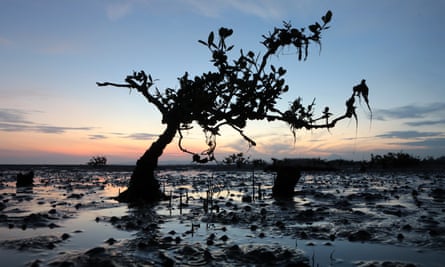Scientists have warned that many of humanity’s most dangerous threats are approaching, as carbon pollution heats the planet to ever more dangerous levels.
According to the report, there are five important natural thresholds that are already in danger of being crossed Global turning points reportThree more may be reached in the 2030s if the world warms by 1.5 degrees Celsius (2.7 Fahrenheit) above pre-industrial temperatures.
Inducing these planetary shifts would not only cause temperatures to spiral out of control in the coming centuries, but would unleash serious and sweeping damage to people and nature that cannot be undone.
“Tipping points in the Earth system pose threats on a scale that humanity has never faced before,” said Tim Linton, of the World Systems Institute at the University of Exeter. “It could lead to devastating domino effects, including the loss of entire ecosystems and the ability to grow staple crops, with societal impacts including mass displacement, political instability and financial collapse.”
Tipping points at risk include the collapse of large ice sheets in Greenland and West Antarctica, widespread thawing of permafrost, the death of coral reefs in warmer waters, and the collapse of an ocean current in the North Atlantic.
Unlike other changes in climate such as hotter heatwaves and heavier rainfall, these systems do not shift slowly in line with greenhouse gas emissions, but can instead shift from one state to a completely different state. When the climate system flips — sometimes with a sudden shock — it can permanently change the way the planet works.
Scientists warn that there is significant uncertainty about when these systems will switch, but the report found that three more could soon join the list. These include mangroves and seagrass meadows, which are expected to die in some areas if temperatures rise between 1.5°C and 2°C, and boreal forests, which could warm as much as 1.4°C or as late as 5°C.

This warning comes as world leaders meet at the Cop28 climate summit in Dubai. The Climate Action Tracker estimated on Tuesday that 2030 emissions targets put the planet on track to warm to 2.5 degrees Celsius by the end of the century, despite promises made by countries at a previous summit to try to limit the temperature to 1.5 degrees Celsius.
The Tipping Point report, prepared by an international team of 200 researchers and funded by the Bezos Earth Fund, is the latest in a series of warnings about the more extreme impacts of climate change.
Scientists have warned that some shifts could create feedback loops that heat the planet or change weather patterns in a way that leads to other tipping points.
The researchers said the systems were so closely related that they could not rule out “cascading transitions.” For example, if the Greenland ice sheet disintegrates, it could lead to an abrupt shift in the Atlantic overturning circulation, an important current that transfers most of the heat into the Gulf Stream. This, in turn, could lead to an intensification of the El Niño Southern Oscillation, one of the most powerful weather patterns on the planet.
Co-author Sina Lauriani, of the Potsdam Institute for Climate Impact Research, said tipping point risks could be catastrophic and should be taken seriously, despite remaining uncertainties.
“Exceeding these thresholds could lead to fundamental and sometimes sudden changes that could irreversibly determine the fate of essential parts of our Earth system for hundreds or thousands of years to come,” he said.
After promoting the newsletter
In its latest form Climate Change Science ReviewThe Intergovernmental Panel on Climate Change found that transition thresholds are unclear, but risks will become more likely as the planet warms.
“Risks associated with single large-scale events or tipping points, such as ice sheet instability or ecosystem loss from tropical forests, move to high risk between 1.5°C to 2.5°C and to very high risk between 2.5°C to 4°C,” she said. “
The Tipping Point Report also looked at what it called “positive tipping points,” such as falling renewable energy prices and growth in electric vehicle sales. It found that such transformations do not happen on their own, but must be enabled by stimulating innovation, shaping markets, entrepreneurship, and educating and mobilizing the public.
a Stady Manjana Melcuret, co-author of the report, last year warned against overusing the label of social tipping points by promising solutions that do not exist on a widespread or uncontrollable scale.
“While scholarship benefits from hope, we need to be careful when presenting social tipping points as potential solutions to the time pressure of climate change,” she wrote.

“Lifelong food lover. Avid beeraholic. Zombie fanatic. Passionate travel practitioner.”
